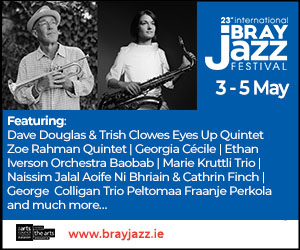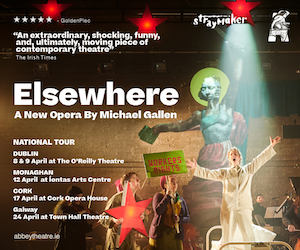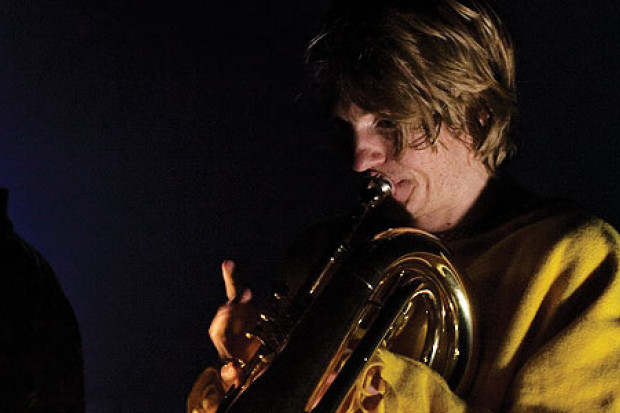
Michael McHale
McHale's Skilful Shaping
Irish Piano Concertos is Belfast-born Michael McHale’s second release on the RTÉ Lyric FM label, the first being his well-received début solo album The Irish Piano, which featured a selection of piano miniatures from various stages of Ireland’s musical heritage. In this release McHale again gives us a contrast between the past with John Field’s Piano Concerto No. 3 written in 1811 and the present with Philip Hammond’s recent concerto finished in the final months of 2015.
Received wisdom on the subject of Field’s concerti has it that they are undeniably pleasant works full of lyrical charm and elegance but unfortunately tend to suffer from the composer’s unreliable grasp of sonata form which lends them a rather flabby overall shape. While this view has only relatively recently been challenged, it does illustrate a difficulty that any performer must overcome when tackling these works. The discursive virtuosic nature of Field’s concerti carry a temptation to luxuriate in their tender moments at the expense of long-range planning, inhibiting his ideas from participating in the larger dramatic design. An overly dry approach on the other hand results in a lack of differentiation between the wealth of often striking ideas that one finds in these works.
McHale however negotiates these pitfalls with an interpretation that is as assured as it is distinctive. The third concerto has been the focus of fine recordings by fellow Irish pianists John O’Conor and Míċeál O’Rourke, both of whom tend to relish the dreamier side of Field’s music. By contrast McHale favours a leaner and more exacting approach matched by the RTÉ National Symphony Orchestra under Courtney Lewis’s incisive direction. His playing in the first movement is noticeably brisker than other interpretations with a carefully measured use of rubato and minimal pedal. This keeps the larger structural goals in view but McHale’s acute sense of phrasing is also attentive to the myriad of details along the way. A good example is the drawn out journey from the midpoint of the exposition to its climactic end which is handled superbly with each figure in this trilling succession of ideas given definition without loss of momentum. It also pays dividends in the discursive development section which requires skilful shaping in order to bring out the inherent drama. One need only compare this recording with Paolo Restani’s rather pedestrian recording of the same movement to get a sense of how much more convincing McHale is in these passages.
Big picture
Following Field’s own practice of playing one of his nocturnes in between the two movements of this concerto, McHale’s choice of the Nocturne No. 2 in C minor again reflects his concern with the big picture. This key, the relative minor, features in a lengthy section of the development of the first movement and again at another important dramatic juncture three quarters of the way through the finale. The nocturne thus works well as a pleasant interlude between the two movements and is presented here in a minimally scored arrangement by the pianist himself with some of the melodic lines tastefully distributed to the strings and woodwinds.
The cleanness and precision of McHale’s playing comes across in the concerto’s finale, a charming rondo, which makes much use of characteristic polonaise rhythms. It is here that the tight synergy between conductor and pianist really comes across in passages such as the piano/woodwind dialogue at 5’40’’, despite the slightly too audible key-clicking from the woodwinds picked-up in the dry acoustic of the National Concert Hall.
Retro-romanticism
Philip Hammond is a composer whose style is firmly orientated towards the conservative end of the contemporary spectrum and his self-described ‘retro-romanticism’ alludes to the array of nostalgic influences that pervade this work – everything from Rachmaninoff and Shostakovich to moments reminiscent of shady film-noir soundtracks. McHale has collaborated with Hammond several times before – they both hail from Belfast – and recorded the composer’s piano cycle Miniatures and Modulations two years ago. If one overlooks the fact that the concerto sounds like it could well have been written in 1915 rather than 2015, there is much to enjoy here as the music ascends one climactic gesture after another without the slightest hint of postmodern irony. Whatever one’s tastes, there’s certainly no denying Hammond’s craftsmanship, and his ability to shape a compelling musical narrative based on good old-fashioned principles of thematic development is impressive – indeed there’s hardly a note in the first two movements that isn’t audibly derived from the motives announced by the piano at the outset. This makes for a rewarding listening experience, and, after the Field, McHale seems to bask in the space that Hammond’s concerto affords him. The highlight is undoubtedly the blistering final toccata movement which forms a nice conclusion to this quality release.
–
Irish Piano Concertos by Michael McHale with Courtney Lewis and the RTÉ National Symphony Orchestra is available from RTÉ Lyric FM.
Published on 5 March 2017
Adrian Smith is Lecturer in Musicology at TU Dublin Conservatoire.

















